How to Care for Giant Pandas
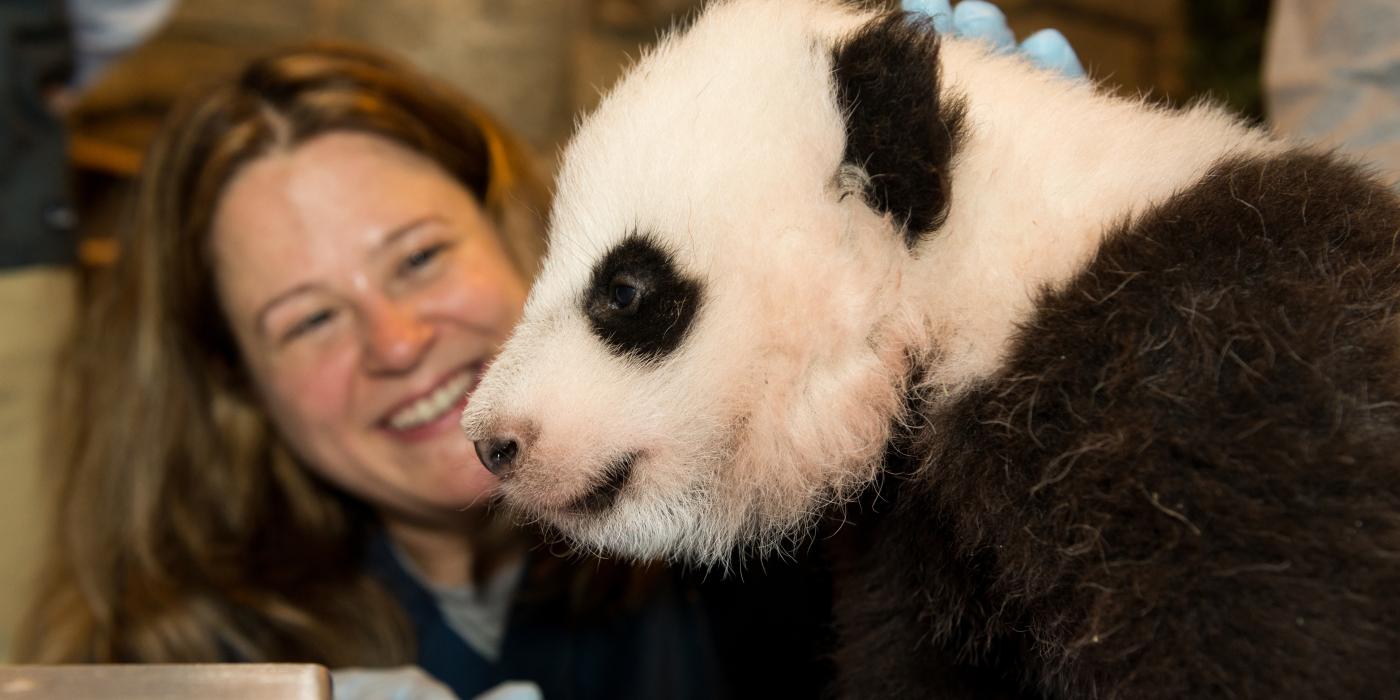
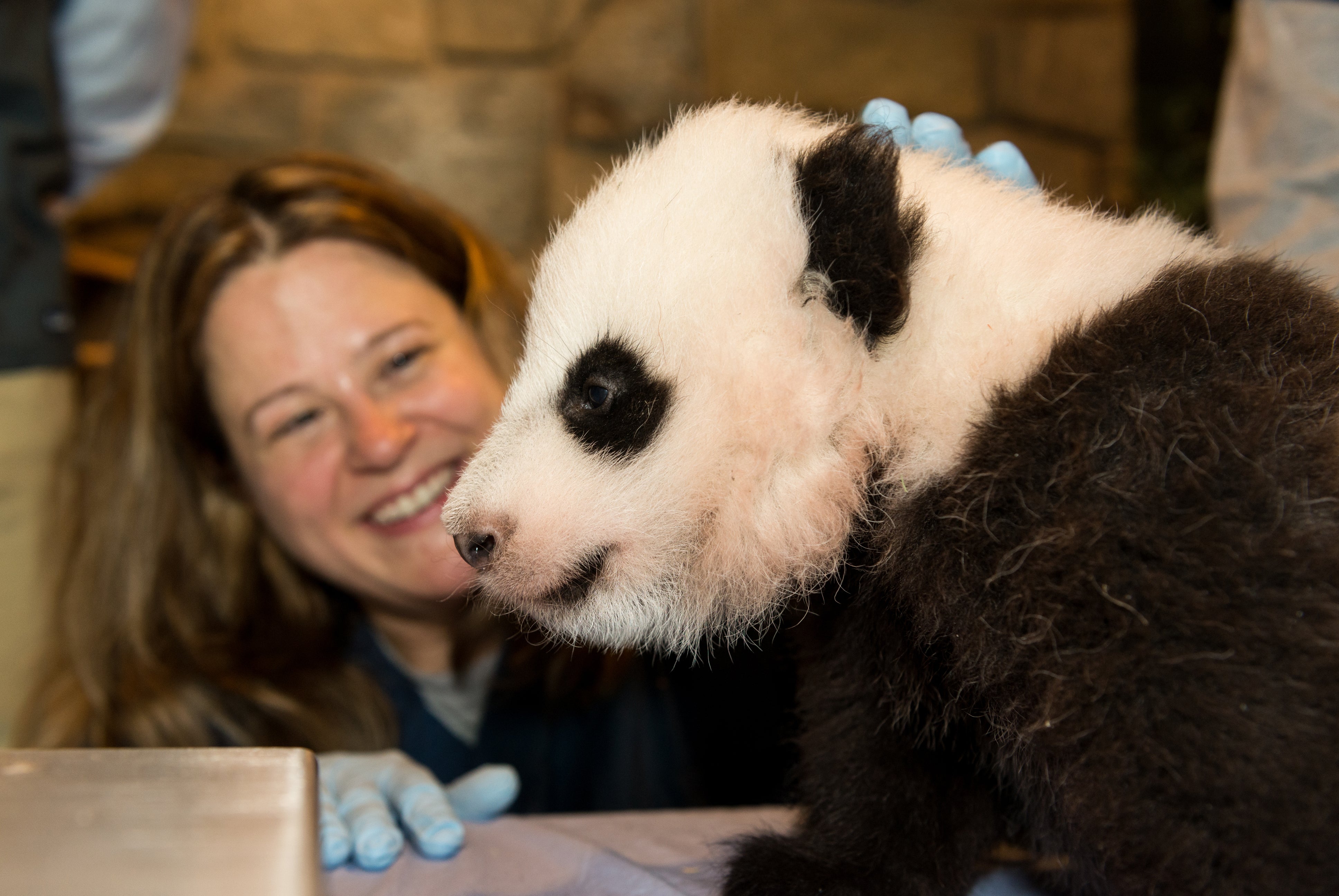
When I first became a giant panda keeper at the Smithsonian’s National Zoo, I had to pinch myself. It was a childhood dream of mine to care for these incredible animals. I grew up in the Washington, D.C., area, and my family visited the Zoo’s first pair of pandas—Ling-Ling and Hsing-Hsing—often.
Today, my career has provided me the incredible honor of working with six giant pandas, including our almost 24-year-old male Tian Tian, 23-year-old female Mei Xiang, and their four cubs: male Tai Shan (born 2005), female Bao Bao (born 2013), male Bei Bei (born 2015) and our newest cub, male Xiao Qi Ji (born 2020). Because the International Union for Conservation of Nature considers giant pandas to be vulnerable to extinction, every cub born here is a win for conservation and a step toward saving the species.
Our giant pandas are at the top of many Zoo visitors’ “must see” list. It’s truly special to see them in person, since very few live outside of China. In fact, ours is one of only three zoos in the United States to exhibit these beloved bears.
Giant pandas are native to the mountains of south-central China, where they live in forests that have a dense understory of bamboo. This habitat does not typically get as hot as Washington, D.C., does in the summer. Giant pandas prefer temperatures of about 75 degrees Fahrenheit or below. Of course, their indoor habitats here at the Zoo are air-conditioned, but even their outdoor habitats have cooling features, including caves, pools and plenty of shady spots.
At this time, only Tian Tian has an outdoor pool filled with water. Xiao Qi Ji is still too small to go swimming, so to keep our cub safe, keepers have drained the water from the outdoor pool he shares with Mei Xiang. They do have a shallow indoor pool which is a safe depth for him. That said, all of our giant pandas seem to enjoy playing in the hose while we are cleaning their habitats, especially Tian Tian!
One of the ways we encourage our giant pandas to use their natural behaviors is by giving them enrichment. Enrichment can be anything from toys to training sessions with keepers to new scents in the bears’ environment. To encourage our pandas to keep physically active and mentally sharp, we offer them four or five types of enrichment every day.
To give our pandas a reason to explore their habitat, keepers will put spices and other scents in their habitats for them to discover and smell. Sometimes, if they really like a scent, they will do a behavior called scent-anointing where they rub the smell all over themselves. Our male giant panda, Tian Tian, seems to really enjoy the scent of bubble bath and will eagerly splash in a tub filled with bubbles. Mei Xiang, on the other hand, will rub pumpkin spice all over her ears!
Environmental elements can be enriching, as they provide something different for the pandas to experience. Mei Xiang and Tian Tian had a ball sliding and rolling around in the snow!
For the most part, giant pandas lead solitary lives. They only come together to breed, and of course, cubs stick closely to their mom’s side until they are between 18 months and 2 years of age. Still, our pandas are able to interact with one another without sharing the same space.
Giant pandas’ territories overlap in the wild. To mimic this, we will occasionally shift—or move—our pandas from one habitat to another. Once a week, Tian Tian walks through Mei Xiang’s yard on the way to the area where we conduct veterinary check-ups. (Interactions with keepers and veterinarians, too, is another form of social enrichment.)
While Mei Xiang and Xiao Qi Ji are inside, Tian Tian sniffs and scent-marks the yard, just like his wild counterparts do. Once Tian Tian’s check-up is complete and he returns to his habitat, Mei Xiang and Xiao Qi Ji come outside and smell his markings!
Biologically, giant pandas are fascinating. Their digestive system is that of a carnivore, but their primary food source, bamboo, is a plant. In the wild, giant pandas move from one bamboo stand to another, sampling different species of the plant.
To mimic this, we receive different kinds of bamboo and will rotate through them to keep the bears’ diets interesting. The first few days when we introduce a new species of bamboo are among the most exciting. Bamboo shoots grow mostly in late spring and early summer, and the giant pandas devour them!
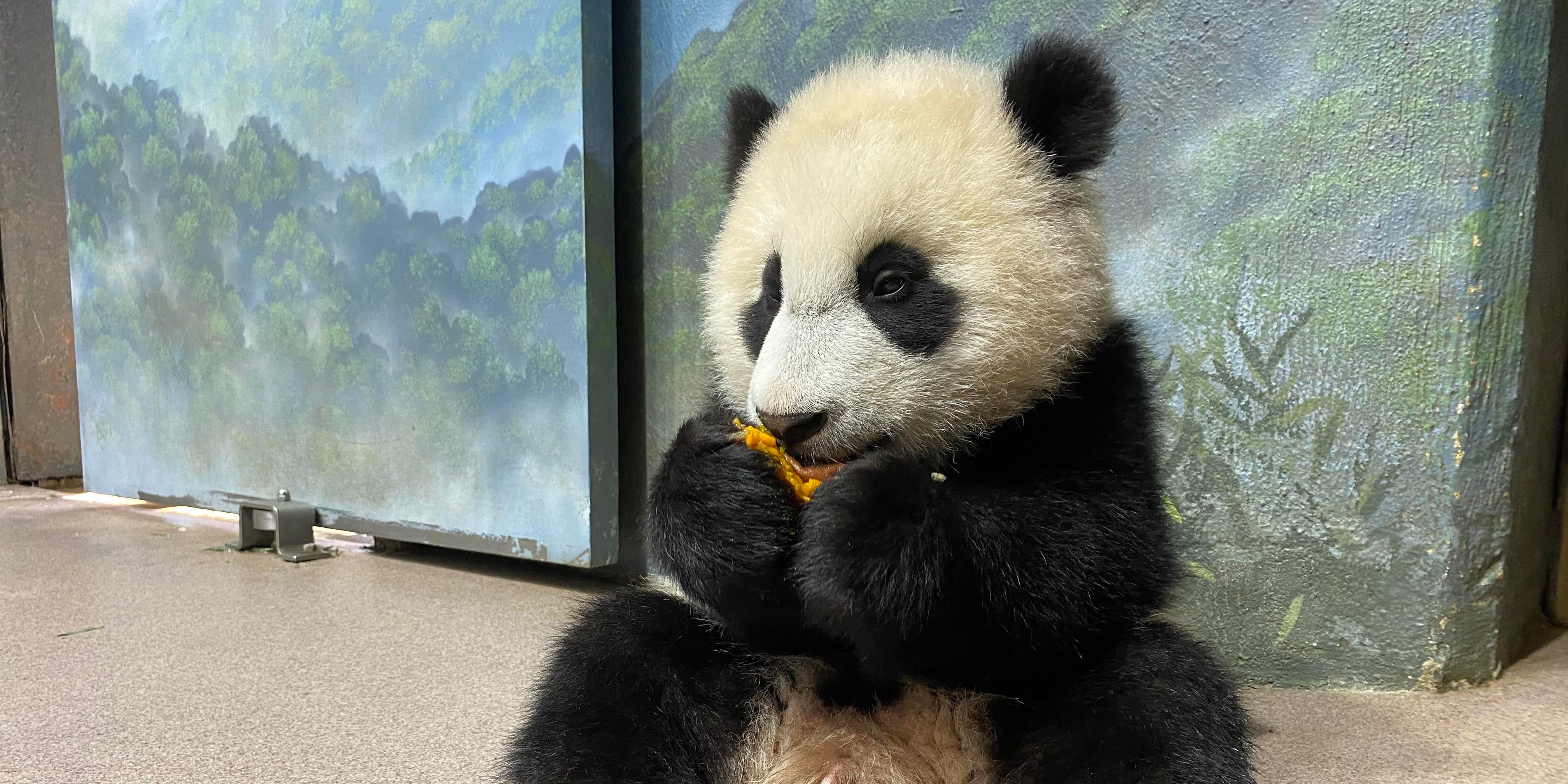
In addition to bamboo, giant pandas receive fruits and vegetables as part of their well-balanced diet. They seem to have a taste for sweeter foods, including sweet potatoes, apples and pears. Each bear has his or her preferences! At almost 1 year old, Xiao Qi Ji has tried many different foods—and sweet potato is his favorite by far! Just like his father, Tian Tian, and sister, Bao Bao, he isn’t too fond of carrots.
To encourage our giant pandas to forage as they would in the wild, we often put their smaller foods into puzzle feeders. The bears have to think about how to get the food out, then roll, spin, or shake their feeders to get the tasty treats inside. Fruitsicles—popsicles made of diluted fruit juice and water—are another favorite treat that also helps keep them cool in the heat.
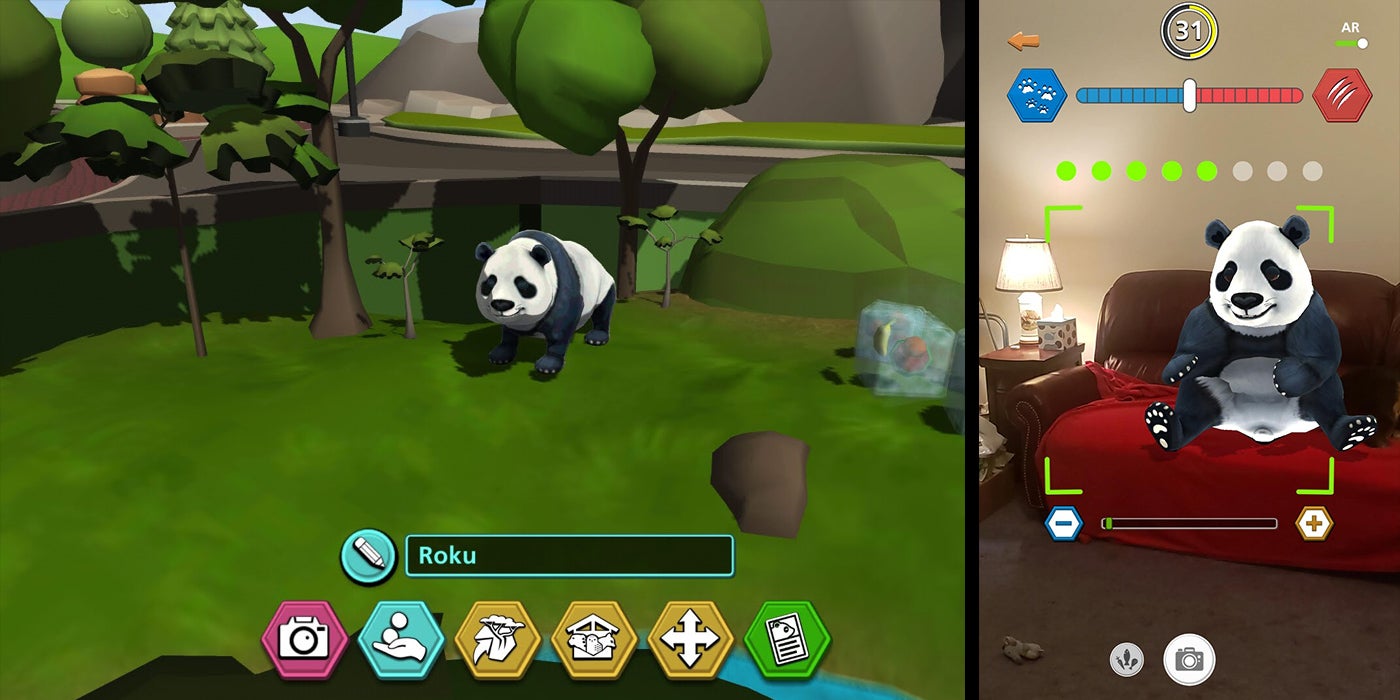
Animal keepers take care of animals every day—including weekends, holidays and during bad weather. This is far from a traditional job, but we get to care for amazing animals and help our visitors learn and care about them, too. All keeper positions are competitive, but for anyone hoping to work with giant pandas, I encourage you to be open-minded and persistent. To start, volunteer at a local animal shelter or veterinary clinic; then, check keeper aide opportunities at your local zoo.
Because there are so few giant pandas outside of China, opportunities to work with them are extremely limited. That is why the Zoo’s mobile game, Zoo Guardians, is such a great game for those who aspire to be animal keepers. It gives players a taste of what it’s like to be a keeper and teaches them all about how we care for animals—from building a habitat to providing food, proper socialization and enrichment.
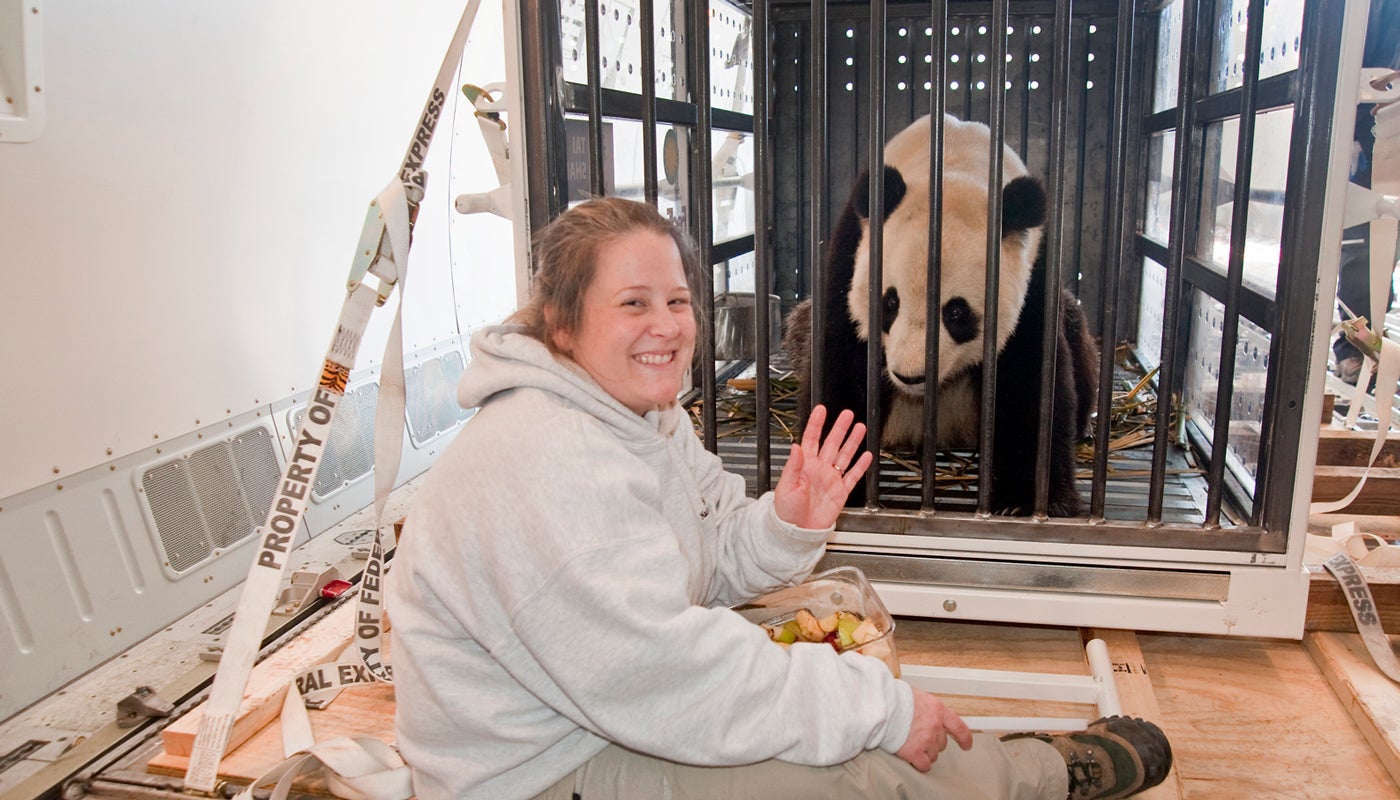
One of the hardest parts of being an animal keeper is saying goodbye to our animals. When our giant panda cubs go off to China to breed, it is a bittersweet moment. Our whole team misses them dearly, but we know they are leaving to do something important: contribute to their species’ survival.
At the end of the day, we want giant pandas to be around for generations to come. In Zoo Guardians, you have the opportunity to be a part of this important process by relocating your animals, either to a zoo or an accredited facility. It is an incredible experience caring for zoo animals but being able to say you are helping to save a species is even more rewarding. That’s what being a real-life zoo guardian is all about!
Caring for animals isn't black and white. Find out how our animal care experts do it! Check out a variety of stories from all over Smithsonian’s National Zoo and Conservation Biology Institute here.
Related Species:

